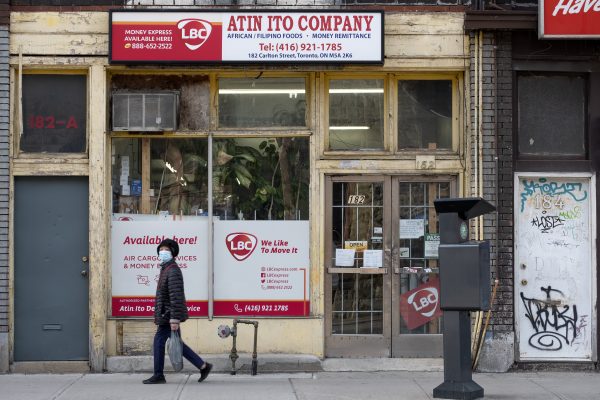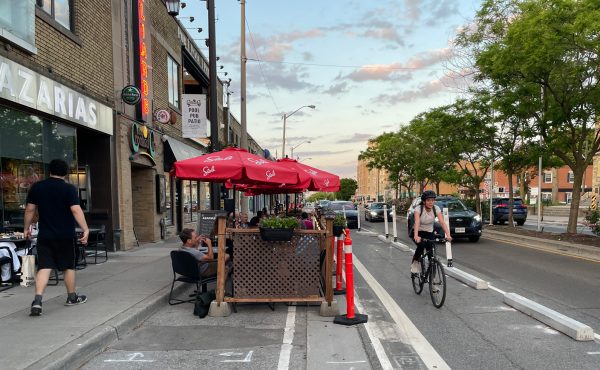
By way of spoiler alert, I’ll begin by saying I have no intention of wasting my time (or yours) rebutting the lunacy of the 15-minute city conspiracy theorists, who have barged into the normally staid world of municipal planning, alchemizing social media rants and COVID-19 paranoia into real world conflict and media coverage.
My question, rather, is this: What now? Do we assume that the 15-minute-city fabulists will soon move on to the next brightly burning object? Or have we arrived at that moment when a domain as dorky as land use planning is forced to circle the policy wagons?
Answer one: I’d say it’s safe to assume that no self-aware municipal planner will ever again use this now poisoned chalice of a phrase in a policy document. The term itself didn’t enjoy full-throated support in the planning world anyway — more on that in a moment — but the municipalities that leaned in to the rhetoric of the 15-minute city (Oxford, Edmonton, Toronto’s Downsview Airport redevelopment etc.) are likely experiencing pangs of pain and regret. Documents will be scrubbed, and new buzzwords, selected for an absence of catchiness, will take their place.
Yet the act of airbrushing this term out of planning policy raises another set of questions: will such defensive moves — reflecting an understandable desire on the part of local planners to avoid insane arguments — read like acquiescence or retreat? Will they merely embolden the lunatics to find even more plots where none exist?
A brief aside here about the concept of the 15-minute city, a term of art coined (or at least popularized) by planner and academic Carlos Moreno, who advised Paris’ crusading mayor Anne Hidaglo on her strategy for transforming the city’s transportation networks. The slogan, which became popular during the (fleeting) build-back-better phase of the pandemic, is undeniably catchy. Yet to my ear, it feels mostly like a clever label that can only be applied retrospectively in highly specific urban conditions, and therefore has limited applicability as a planning philosophy.
In places like Paris, the density and transit infrastructure long pre-dated Moreno’s formulation, as have similar development patterns (streetcar suburbs) and planning outlooks (walkable neighbourhoods, complete communities). It evokes some of the ideas that were gathered under the heading of New Urbanism in the 1990s. Mainly, though, the 15-minute city ideology reminds me of the “100-mile” diet fad of a decade or so ago: a pat formulation, with little relevance to the residents of low-density urban neighbourhoods built after World War II.
Whatever your view, we’re here now, grappling with, well, unintended consequences.
Certainly, not all the people showing up at local planning meetings wondering if they’ll be imprisoned in their neighbourhoods are pitchfork-wielding zealots; some have simply become too stoned on social media to think their way through the nonsense. But the energy fueling these efforts is absolutely malign, and has been pushed out by the unhinged aggression of a segment of society that’s bent on breaking things and identifying scapegoats to torment.
The only way to counter bullying, goes one argument, is to stand up to the bullies, which, in the context of the current discussion, means defending the slogan and reclaiming the ideas behind it. Alternatively, as The Toronto Star‘s Alex Boyd reported earlier this week, local politicians and planners will have to make sincere efforts to persuade the doubters — to fight a war of hearts and minds, so to speak.
I don’t know if there’s a right answer. The summer before last, I felt greatly appreciative of the ordinary people who came down to the University Avenue hospitals and escorted patients or visitors past the crowds of braying anti-vaxxers tormenting health care workers.
On the other hand, I’d say planning departments and local councillors face the very real risk of seeing public meetings hijacked by the kind of protestors who dog Justin Trudeau or try to shut down drag queen readings for kids.
There’s a telling and entirely predictable moment in Alex Boyd’s account of an Edmonton city councillor, Andrew Knack, who was determined not to be dismissive with people who’ve fallen under the thrall of the hard-core 15-minute conspiracists.
At a recent public meeting, she reports, the tedious circular arguments with the few attendees determined to unearth the plot drove off the rest of the crowd. Knack, writes Boyd, argued that he had to address public concerns and fears, no matter how bug-eyed. “You can dismiss it, but then that just pushed them away,” he says. “And it pushes them into that same position that is more and more reinforced by the community they may have found.”
I suppose Knack’s intent is laudable and democratic, but it also feels like some version of a dynamic that exists in many classrooms, workplaces or families — that attention-seekers succeed in their quest for attention at the expense of everyone else. City planners and councillors already have enough difficulty engaging the public in discussions about their neighbourhoods, so it’s pretty easy to imagine that an evening spent in the company of people howling about some nefarious scheme will succeed in driving away the few who showed up to provide the feedback sought.
The silver lining here is the advent of online public consultation, which pre-dated the pandemic but came of age during the lockdown and rapidly revealed itself as a far superior tool for soliciting feedback and sharing information. A quick scan of the city’s public consultation schedule suggests that well over half are now Webex or live-streamed on Youtube, and include features like online surveys that remain open for weeks, posted planning documents and so on.
The merits of digital consultation — not least of which is the fact that the host can hit mute — serve as a reminder of the well-documented failings of public meetings, but particularly the convenience factor for working families, single parents, etc. The downside, of course, involves issues such as digital literacy, connectivity, and language. But the structural short-comings of traditional public meetings represent, in my view, a far greater barrier to resident participation, and we shouldn’t mourn the fact that they’re going the way of the dodo.
In fact, if the mouth-breathers end up hastening the demise of the conventional public meeting, they may well have made an unwittingly constructive contribution to complex business of urban planning. But we should still hope that their 15 minutes will soon be up.
photo by Timothy Neesam




